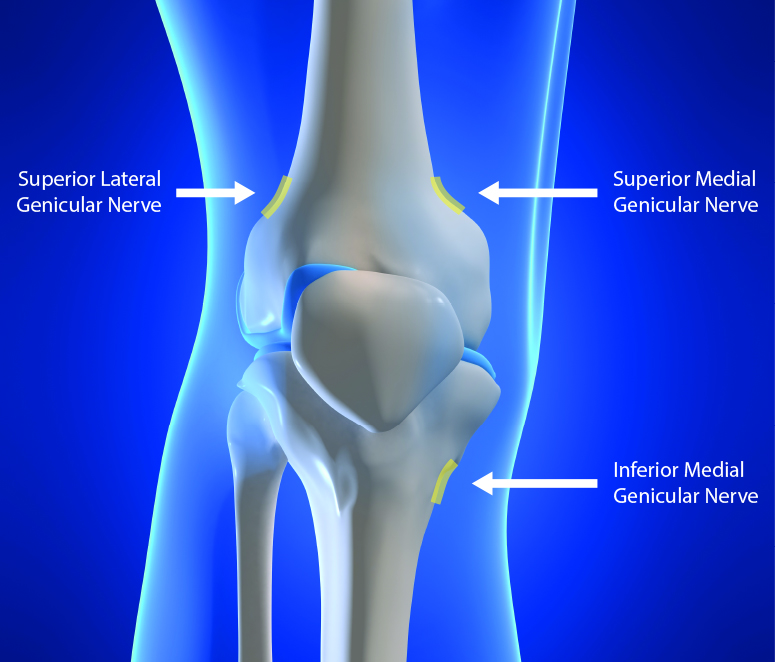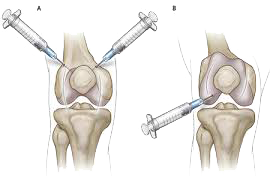
Genicular Nerve Block & Radiofrequency Ablation of Knee Joint
Chronic osteoarthritis pain of the knee is often not
effectively managed with prescribed medications.
Radiofrequency (RF) ablation, when applied to articular nerve
branches (genicular nerves), provides a therapeutic alternative
for effective management of chronic pain associated with
osteoarthritis of the knee
Although surgery is generally effective for patients with advanced disease, some older individuals with other chronic conditions may not be appropriate surgical candidates. In addition some patients do not wish to consider surgery and prefer nonsurgical options. In these patients, radiofrequency ablation of the genicular nerves might be a successful alternative to surgery. This procedure is based on the theory that cutting the nerve supply to a painful structure may alleviate pain and restore function.
Genicular Nerve Block (GNB)
Patients with chronic knee pain that has failed to respond to conservative care may be candidates for a genicular nerve block
Indications for GNB
+ Patients with chronic knee pain secondary to osteoarthritis
Diagnostic GNB
These injections are performed under fluoroscopy guidance.





